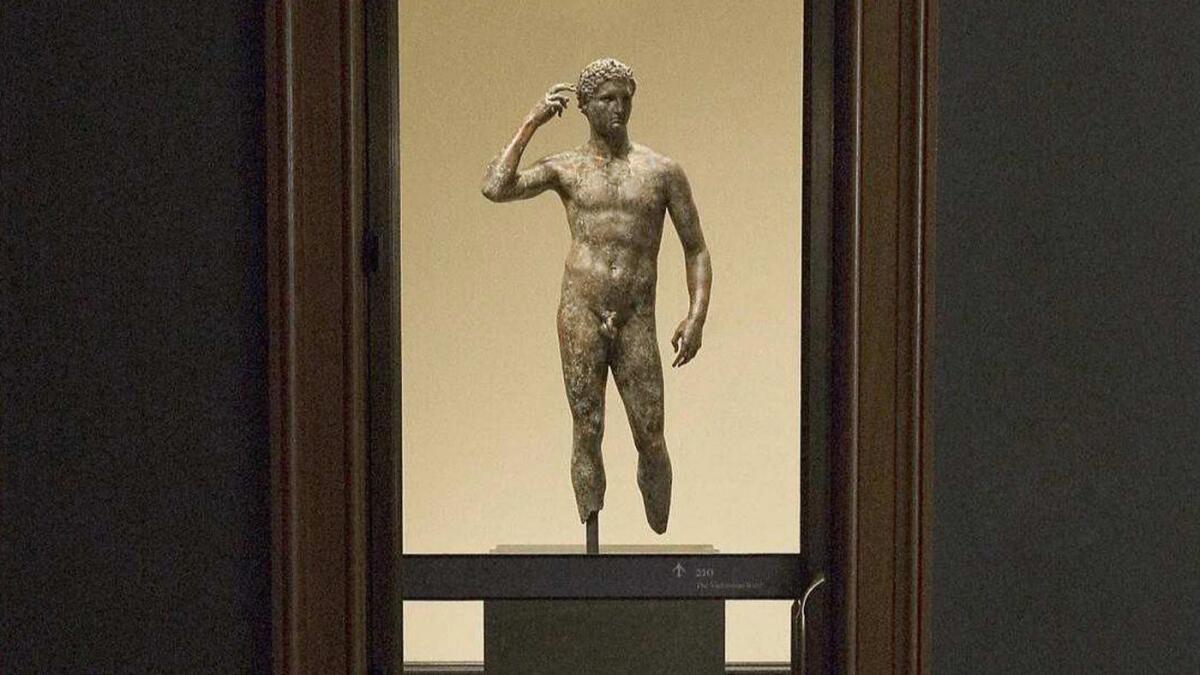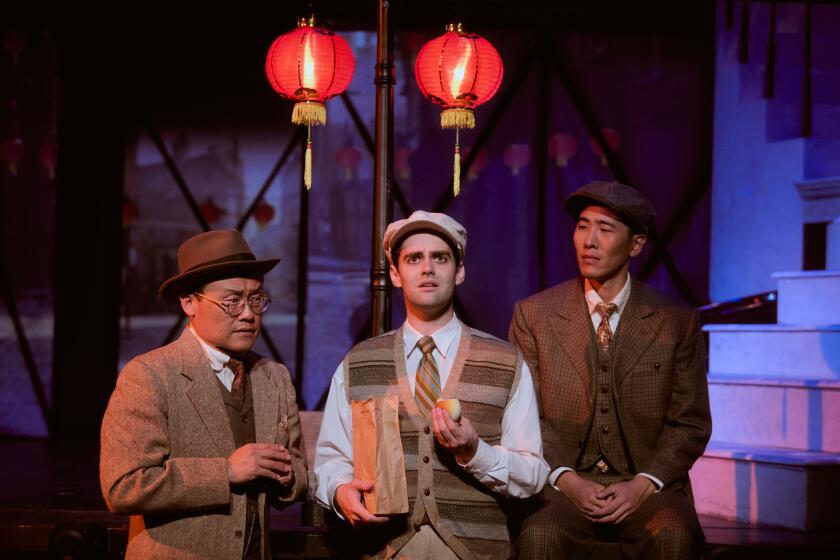Getty loses Italian court ruling on ‘Victorious Youth’ but vows to keep fighting for prized statue

An Italian court has ruled that one of the J. Paul Getty Museum’s most prized antiquities, the Greek bronze known as “Statue of a Victorious Youth,” should be repatriated to Italy — but the Getty isn’t giving up the fight.
The ruling, issued Friday in Pesaro, is the latest in Italian court rulings that date to 2007 regarding the provenance of the statue, also known as the “Getty Bronze.” The museum purchased the work from a German art dealer in 1977 for $3.95 million and has long said that the sale was legitimate, maintaining that Italy has no archaeological claim on the work.
“The statue was found in international waters in 1964,” Getty spokesman Ron Hartwig said in a statement following the recent ruling. The museum purchased it, he said, “years after Italian courts concluded there was no evidence that the statue belonged to Italy.”
Italy requested that Getty return the statue on “ethical” grounds in 1989, the museum said. The Italian government has asserted that the artwork, discovered in 1964 by Italian fishermen who then hid and sold it, had been illegally exported from Italy years before the Getty’s purchase. The Italian government said that as soon as the statue touched the fishermen’s net, the statue became Italian property and therefore couldn’t have been acquired legally by the Getty.
“But we simply dispute that,” Hartwig said in a phone interview, adding that the court ruling Friday is “not the final ruling.”
He added in the Getty statement: “The statue is not part of Italy’s extraordinary cultural heritage. Accidental discovery by Italian citizens does not make the statue an Italian object. Found outside the territory of any modern state, and immersed in the sea for two millennia, the Bronze has only a fleeting and incidental connection with Italy.”
The Times reached out to the Institute of Italian Culture in L.A. for a response but did not hear back.
The June 8 ruling came from Italy’s Court for the Preliminary Investigations of Pesaro. Judge Giacomo Gasparini upheld the original forfeiture order issued on Feb. 10, 2010, by another Preliminary Investigations judge. The Getty appealed that forfeiture order in 2010 and did so again in 2012, leading to yet more legal actions. The museum said it now plans to appeal to the Court of Cassation, Italy’s version of the Supreme Court.
“We’re hopeful that the Court of Cassation will find in our behalf and we’ll prevail,” Hartwig said in an interview. “Because we believe, strongly, that the Getty Bronze belongs to the Getty and the people of Los Angeles.”
The provenance of artworks can be a tricky and heated issue. Since 2007 the Getty has returned more than 40 works in its collection to Greece and Italy often after questions about the circumstances under which the works were acquired. Some of these returns were voluntary and in response to provenance research by Getty Museum staff.
In 2005, the Italian government accused former Getty antiquities curator Marion True of knowingly purchasing looted pieces. She denied the charges, which were dismissed in 2010 after a judicial panel ruled that the statute of limitations had expired.
Partly as a result, the Getty has put strict acquisition policies into place that have become a model for other art institutions. On an even broader scale, the Getty Research Institute’s Provenance Index, a collection of databases, is considered a leader in the field.
“Victorious Youth,” which dates to 300 to 100 BC and first went on display at the Getty in 1978, is incredibly significant to the museum’s collection. The piece is believed to have been possibly created by Lysippus, Alexander the Great’s personal sculptor. In his review earlier this year of the reinstalled antiquities collection at the Getty Villa in Pacific Palisades, Times art critic Christopher Knight called the Getty Bronze “one of the greatest classical sculptures in the United States.”
“We are disappointed in the ruling, but we will continue to defend our legal right to the statue,” Hartwig said. “The facts in this case do not warrant restitution of the object to Italy.”
“Victorious Youth” remains on view while the epic legal battle continues.
Follow me on Twitter: @debvankin
UPDATES:
6:10 p.m.: This article has been expanded throughout, with history and context for the case.
This article was originally published at 2:30 p.m.
More to Read
The biggest entertainment stories
Get our big stories about Hollywood, film, television, music, arts, culture and more right in your inbox as soon as they publish.
You may occasionally receive promotional content from the Los Angeles Times.







